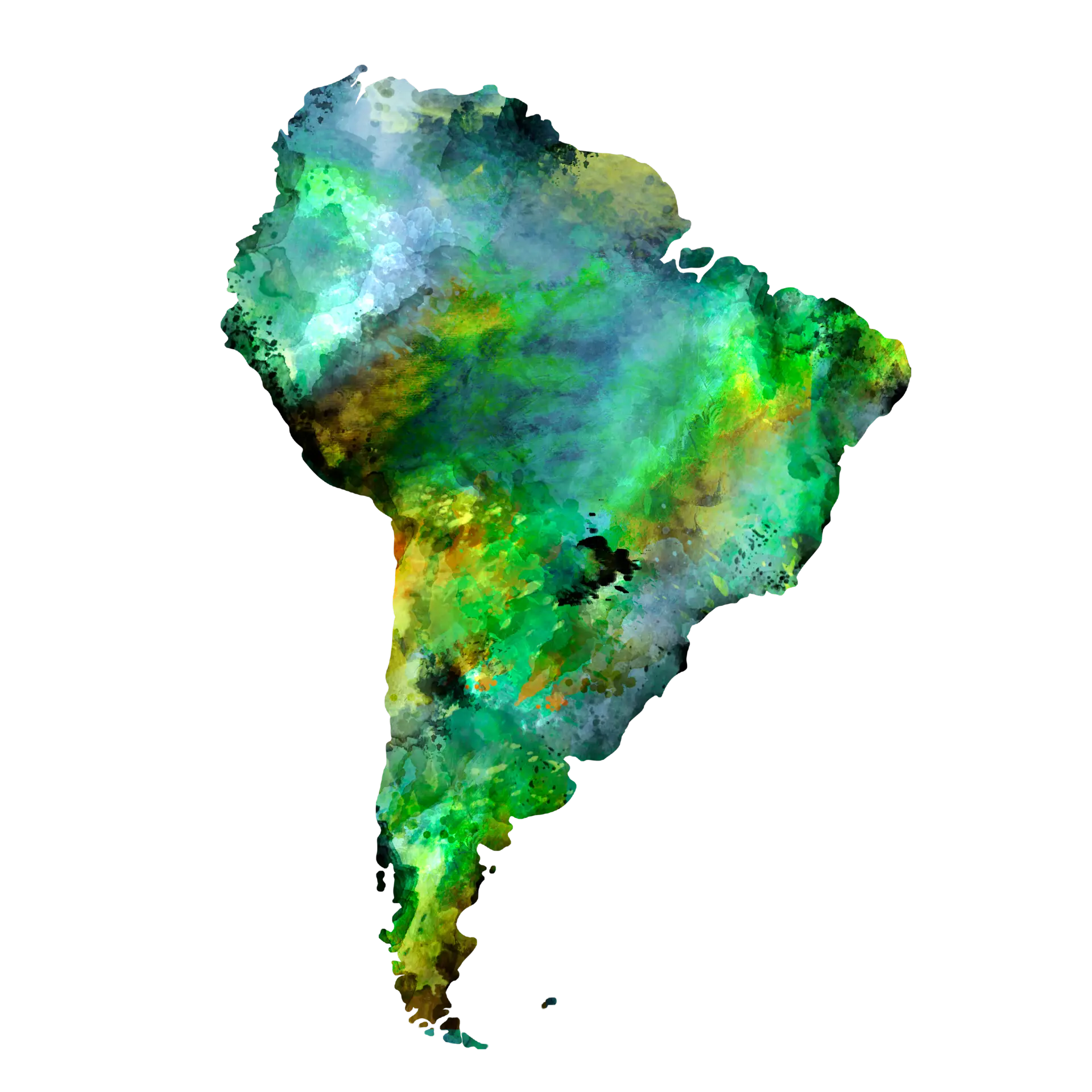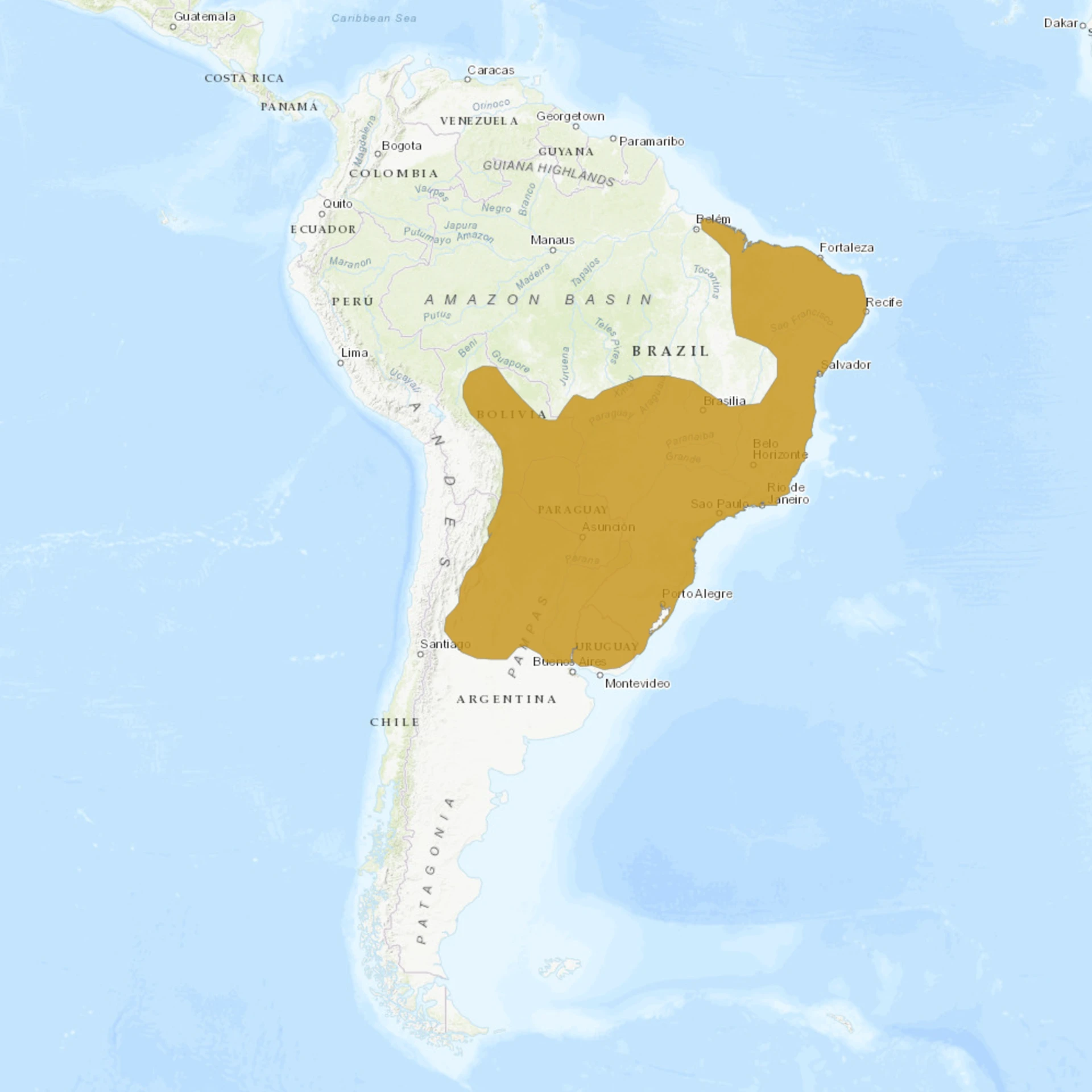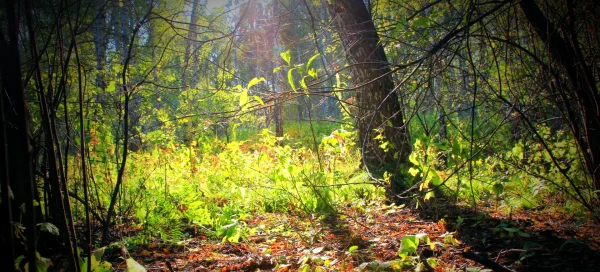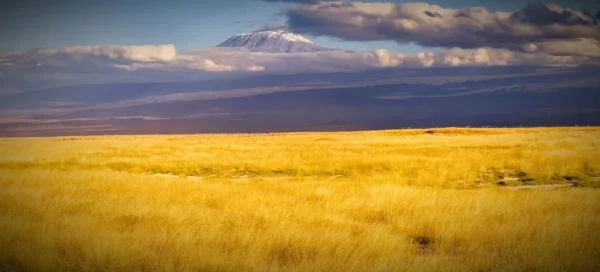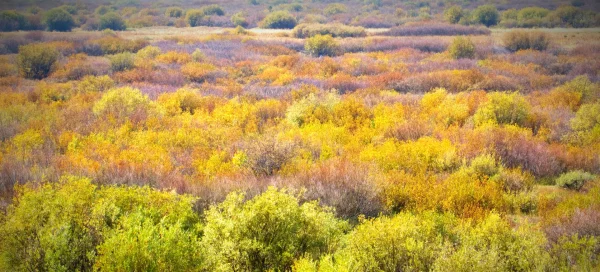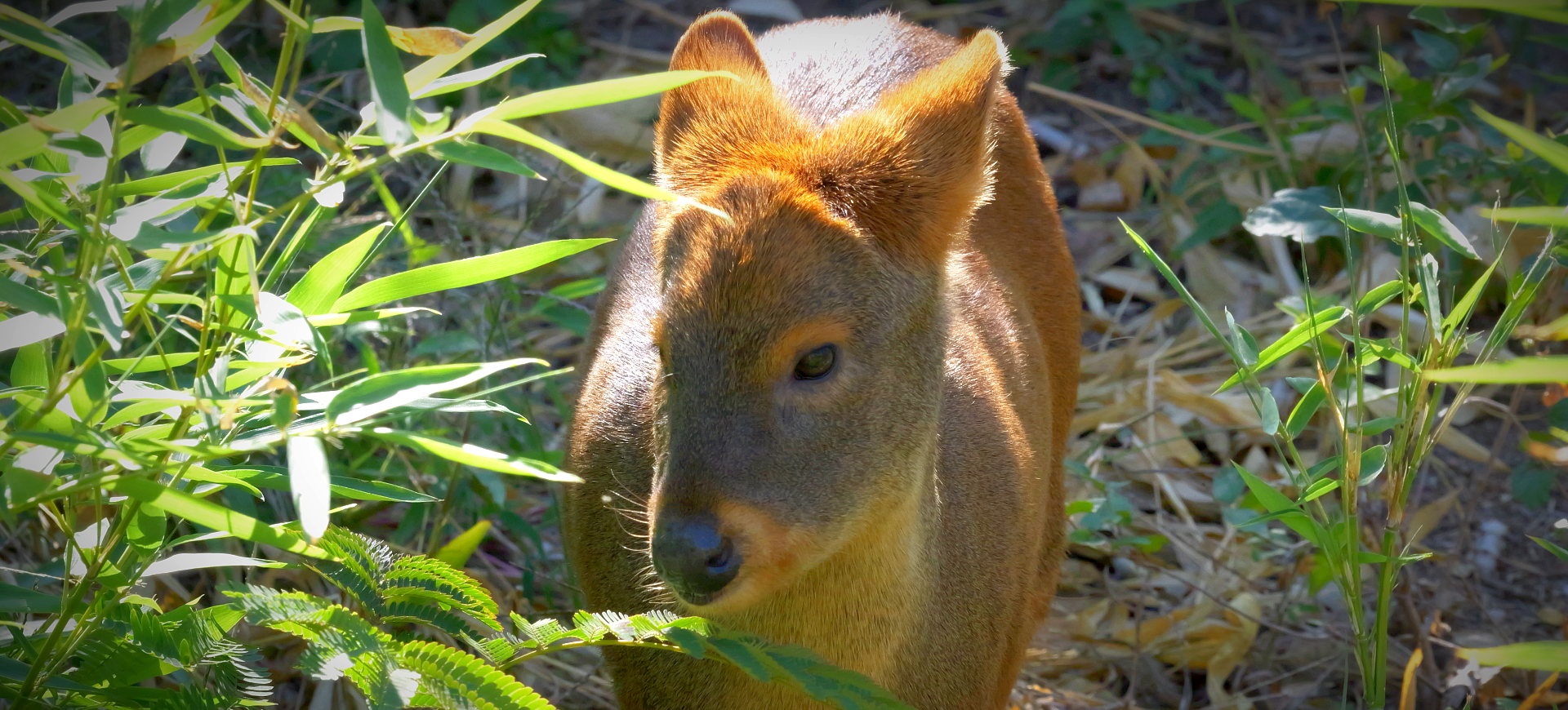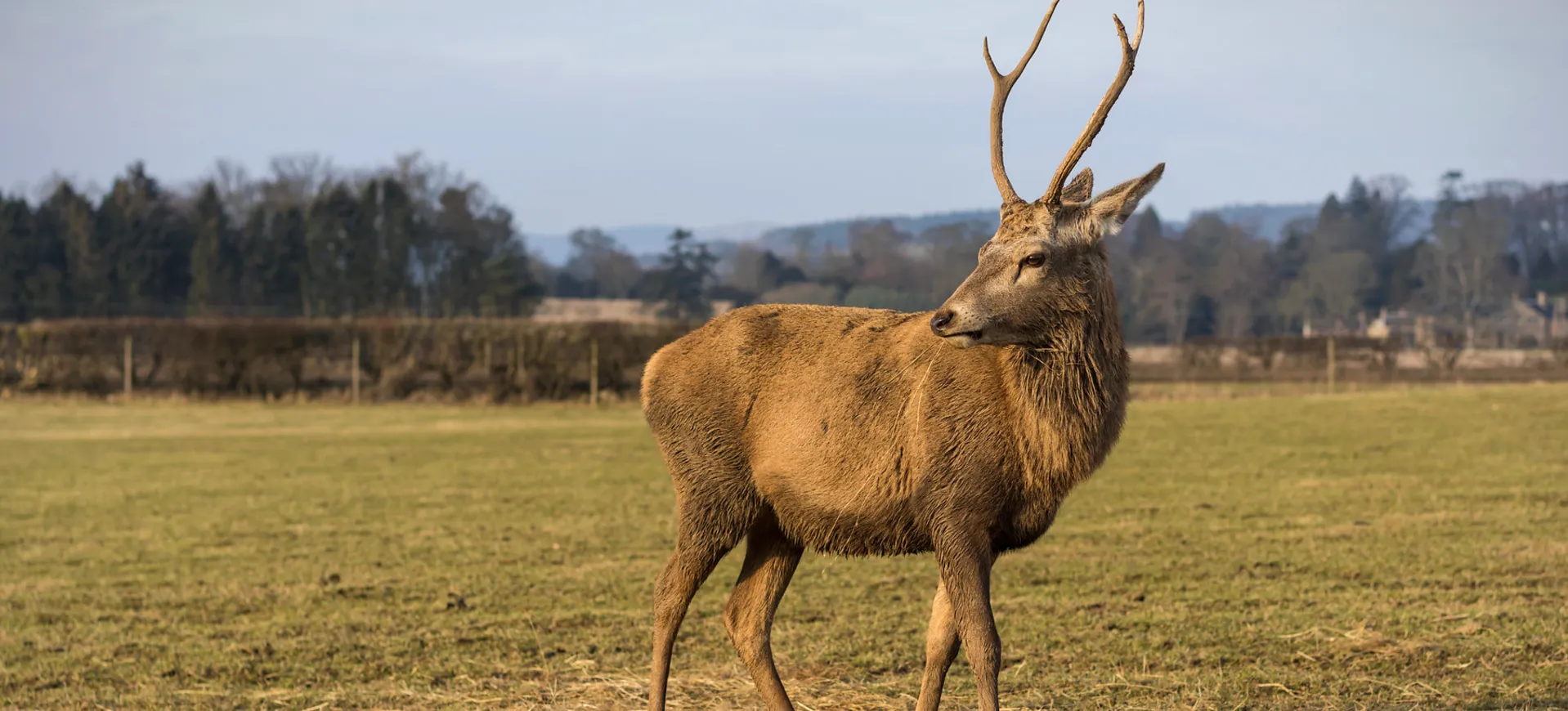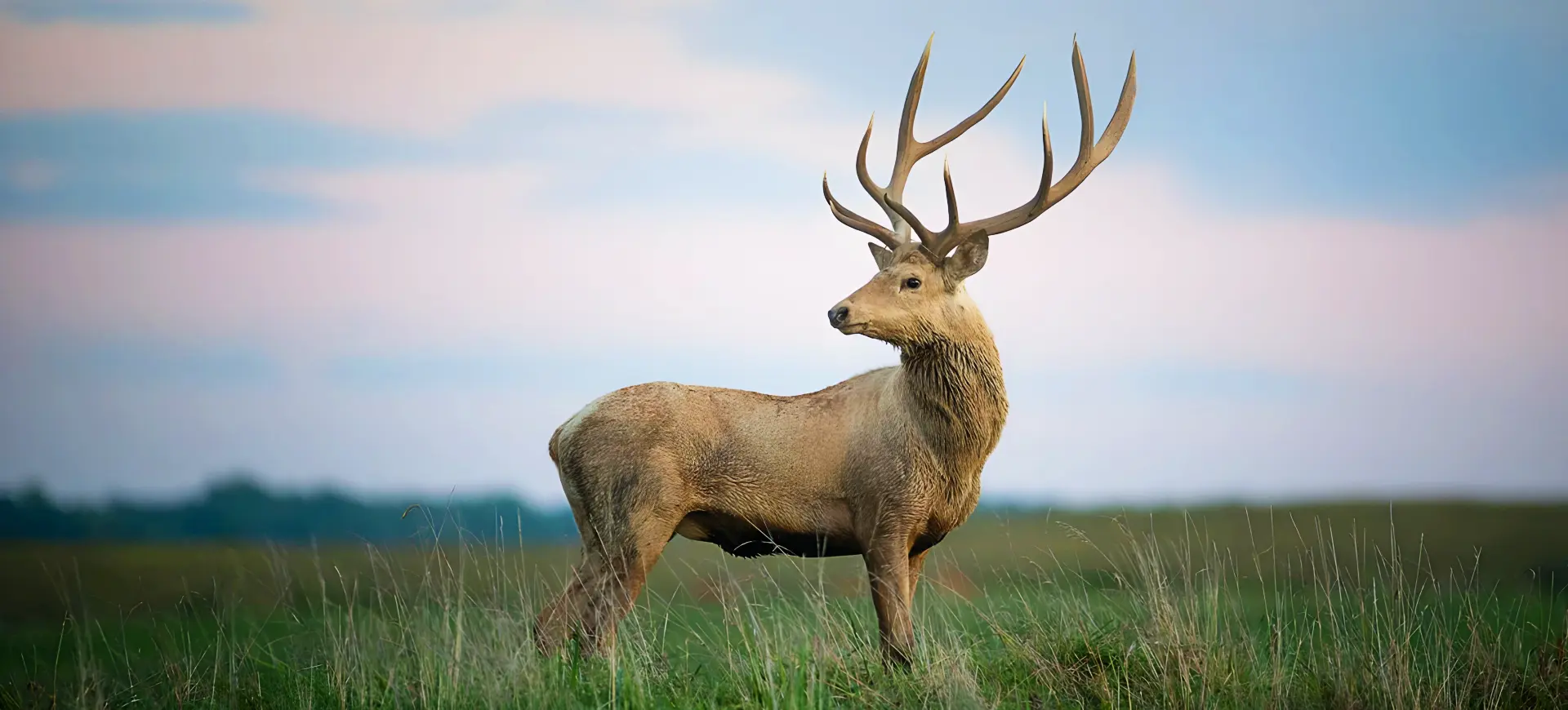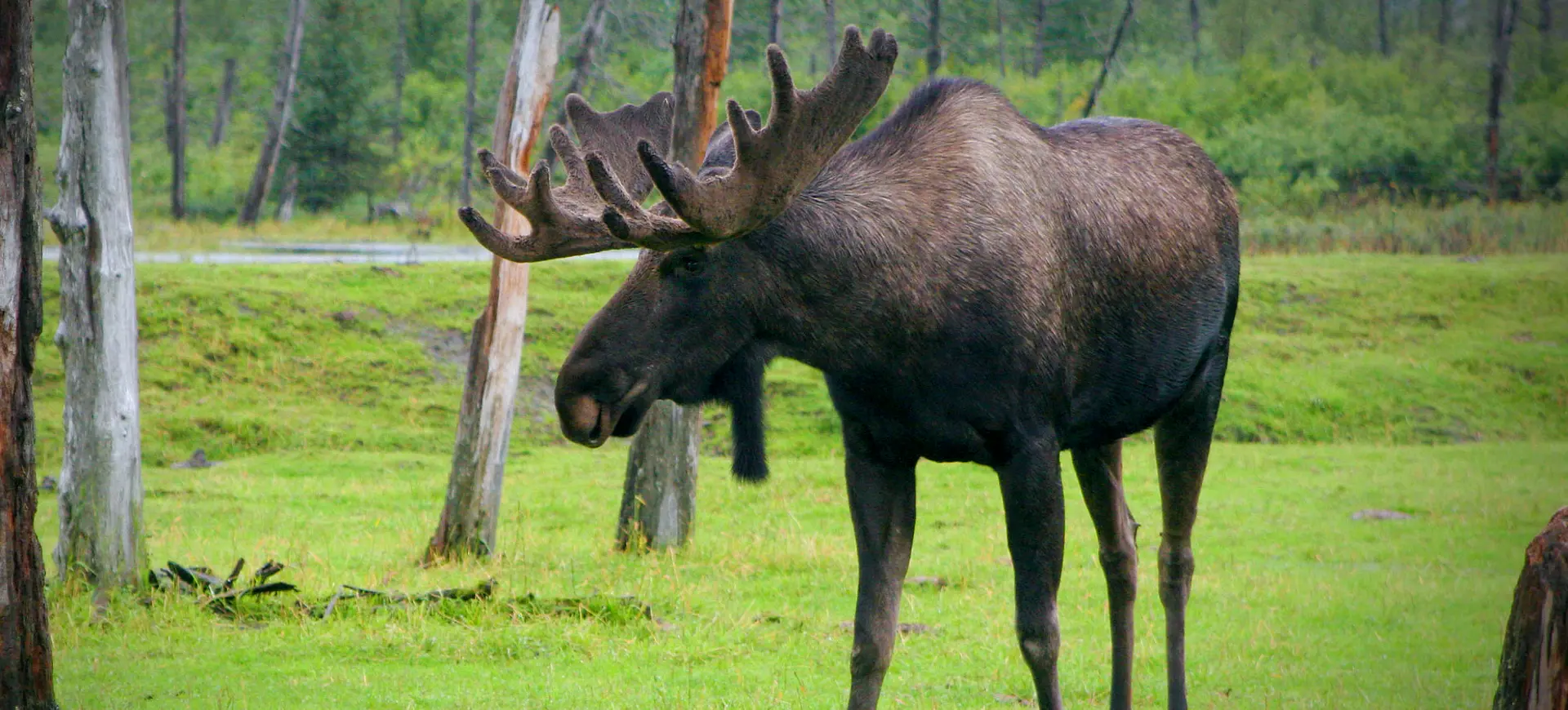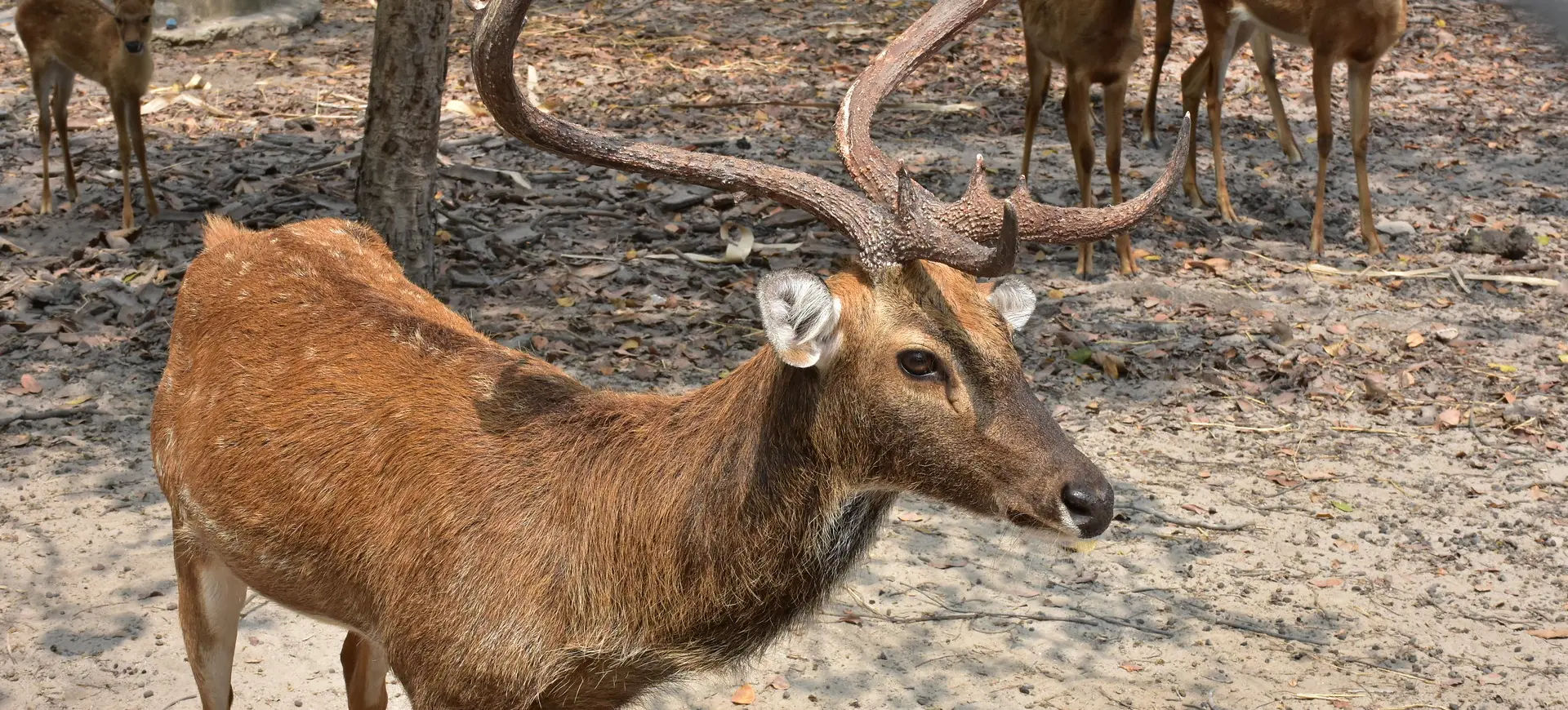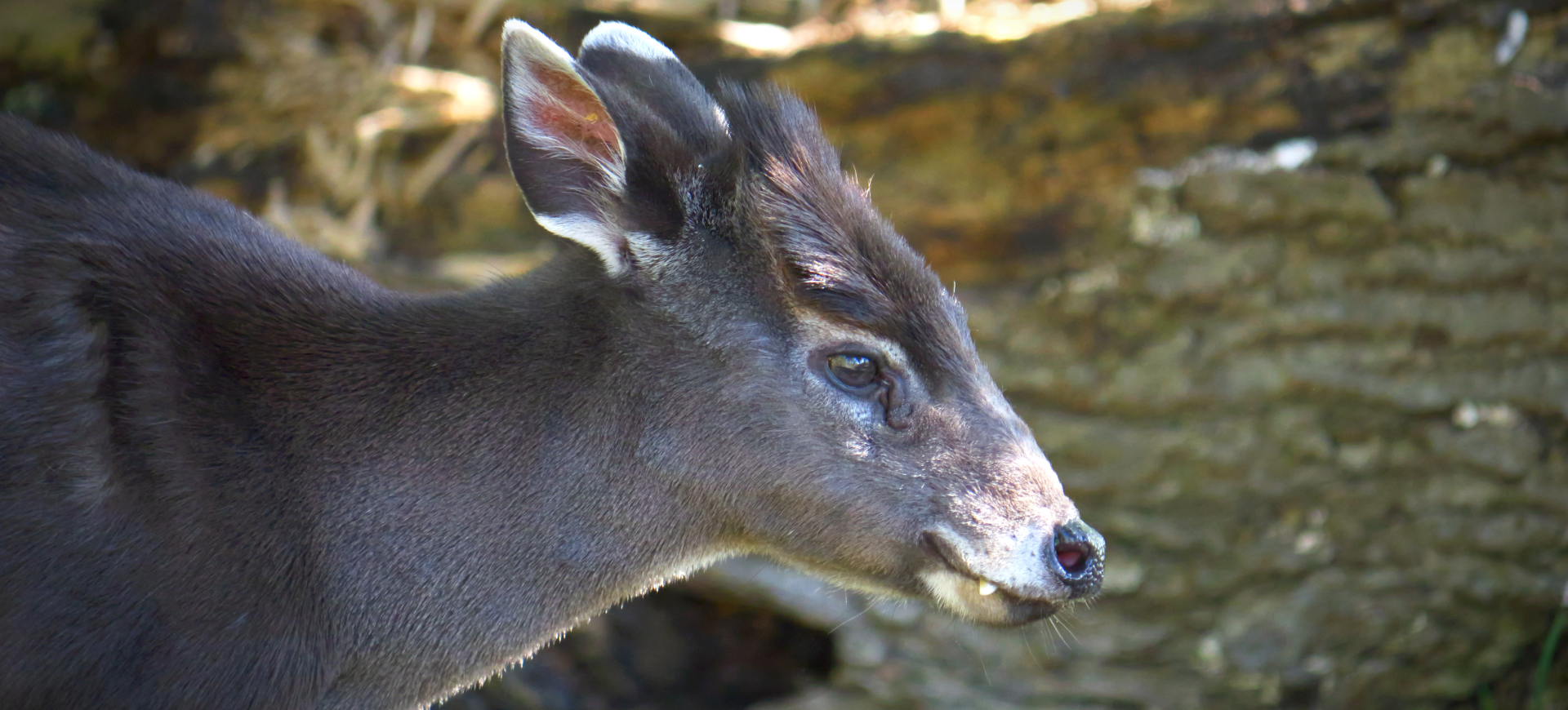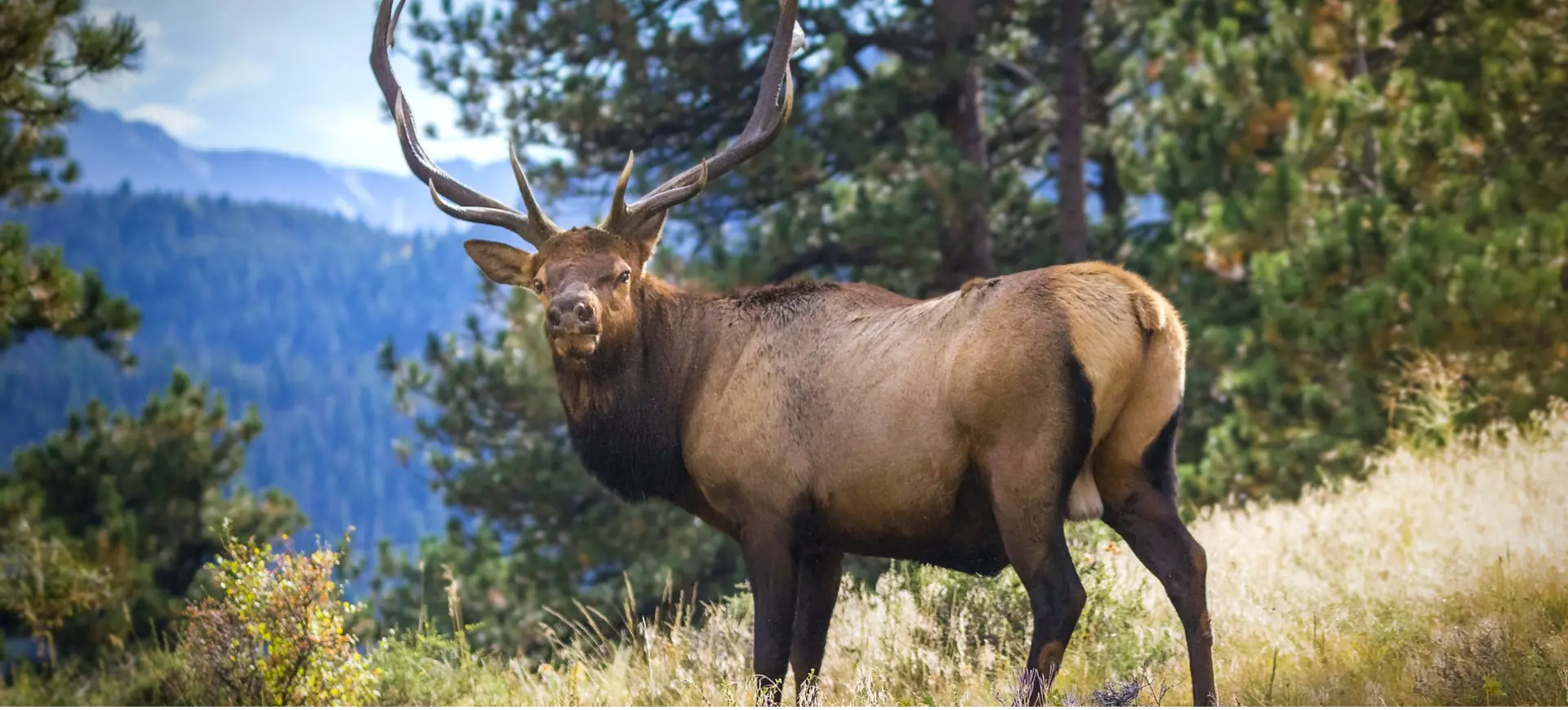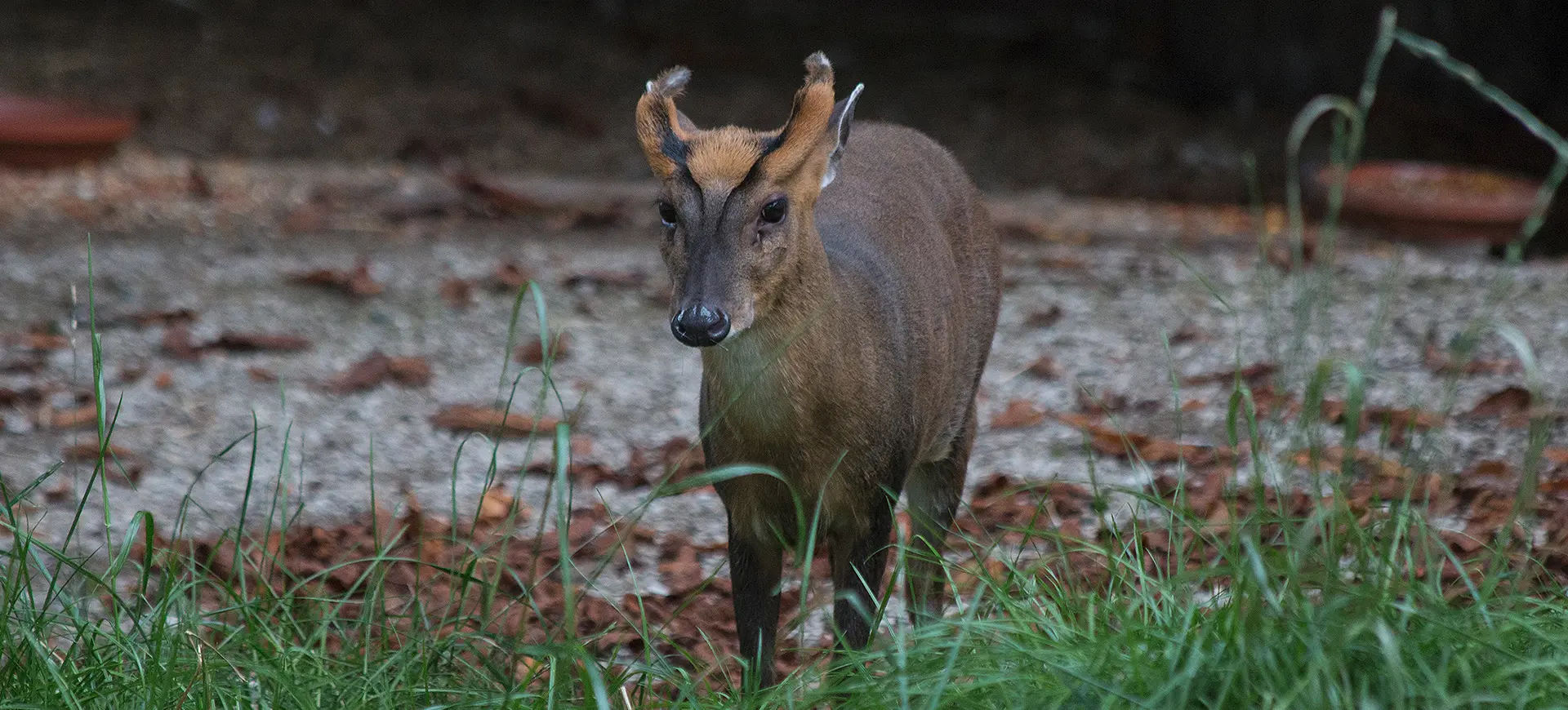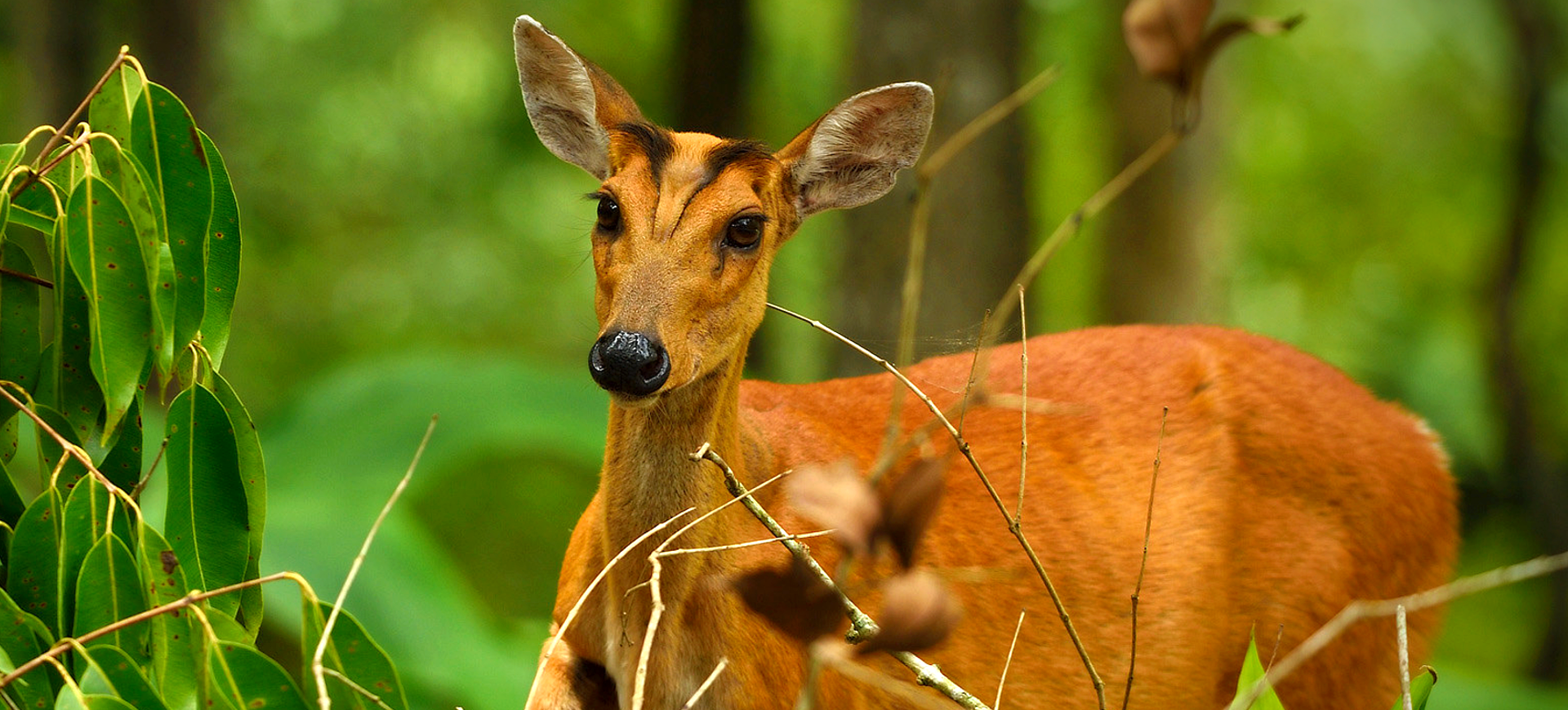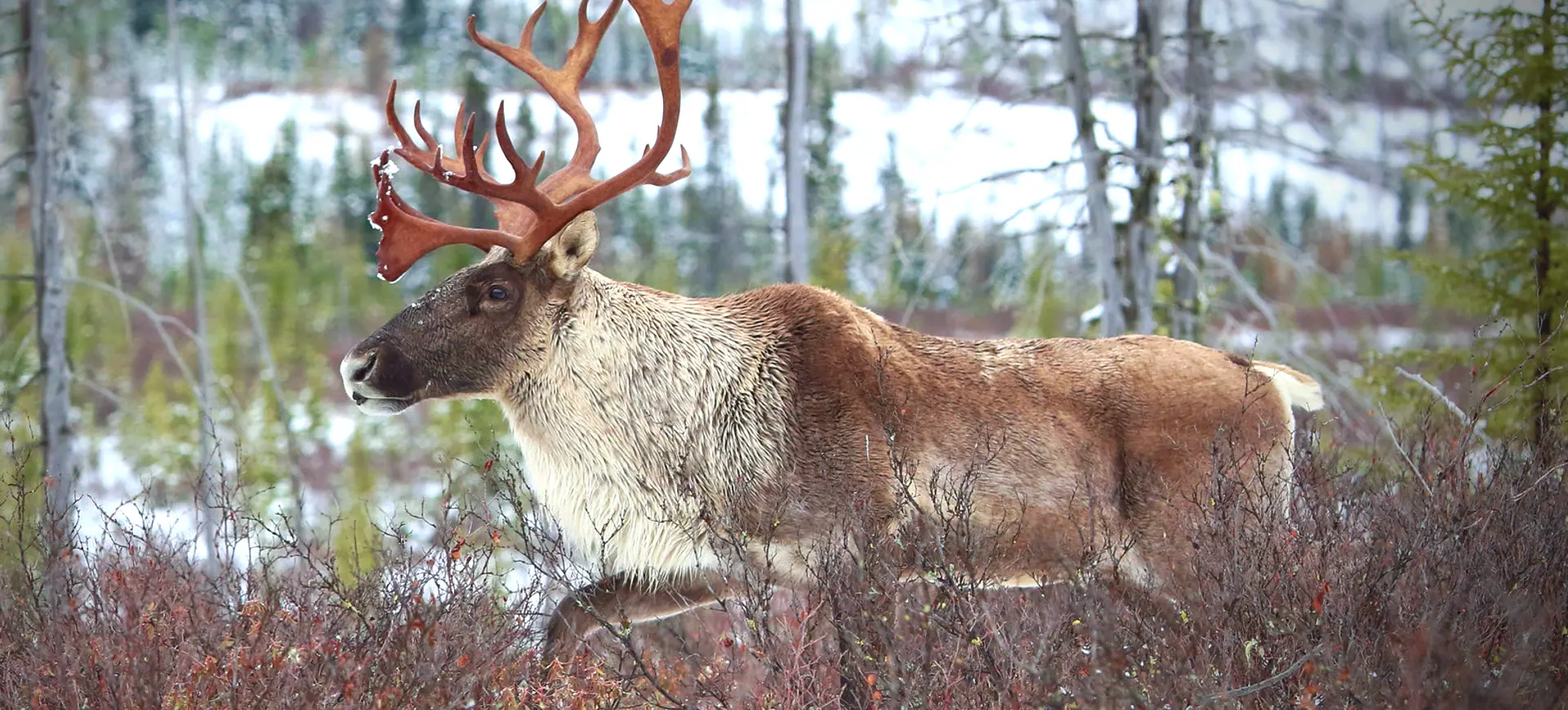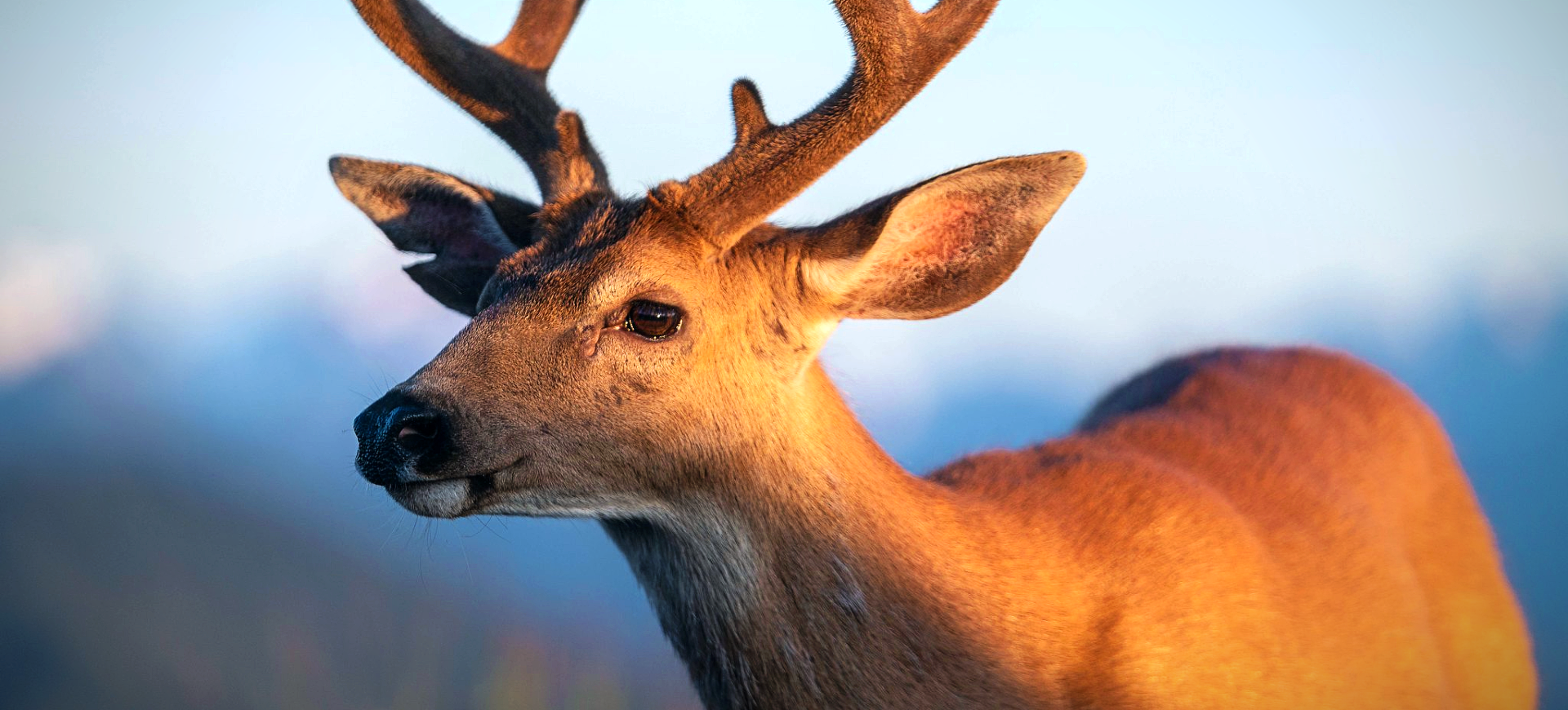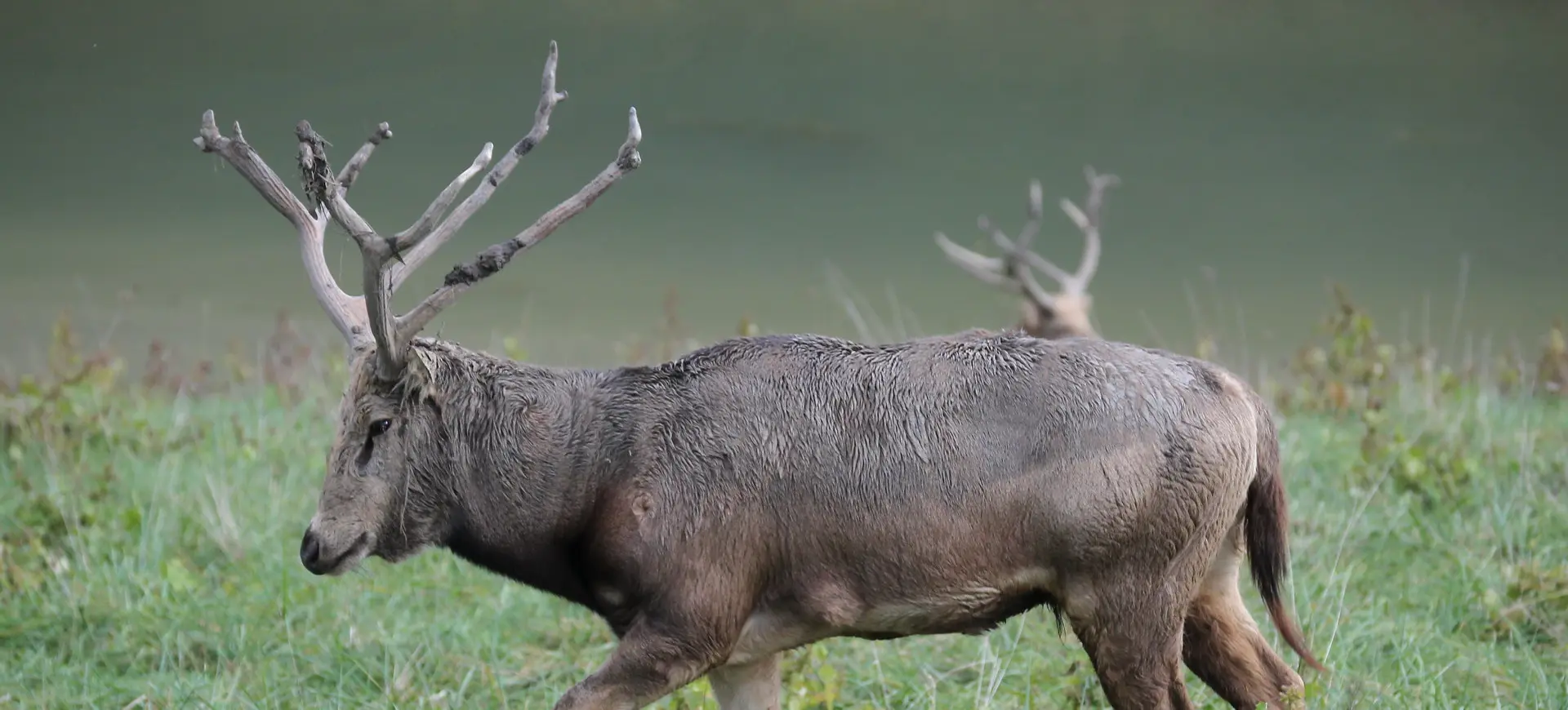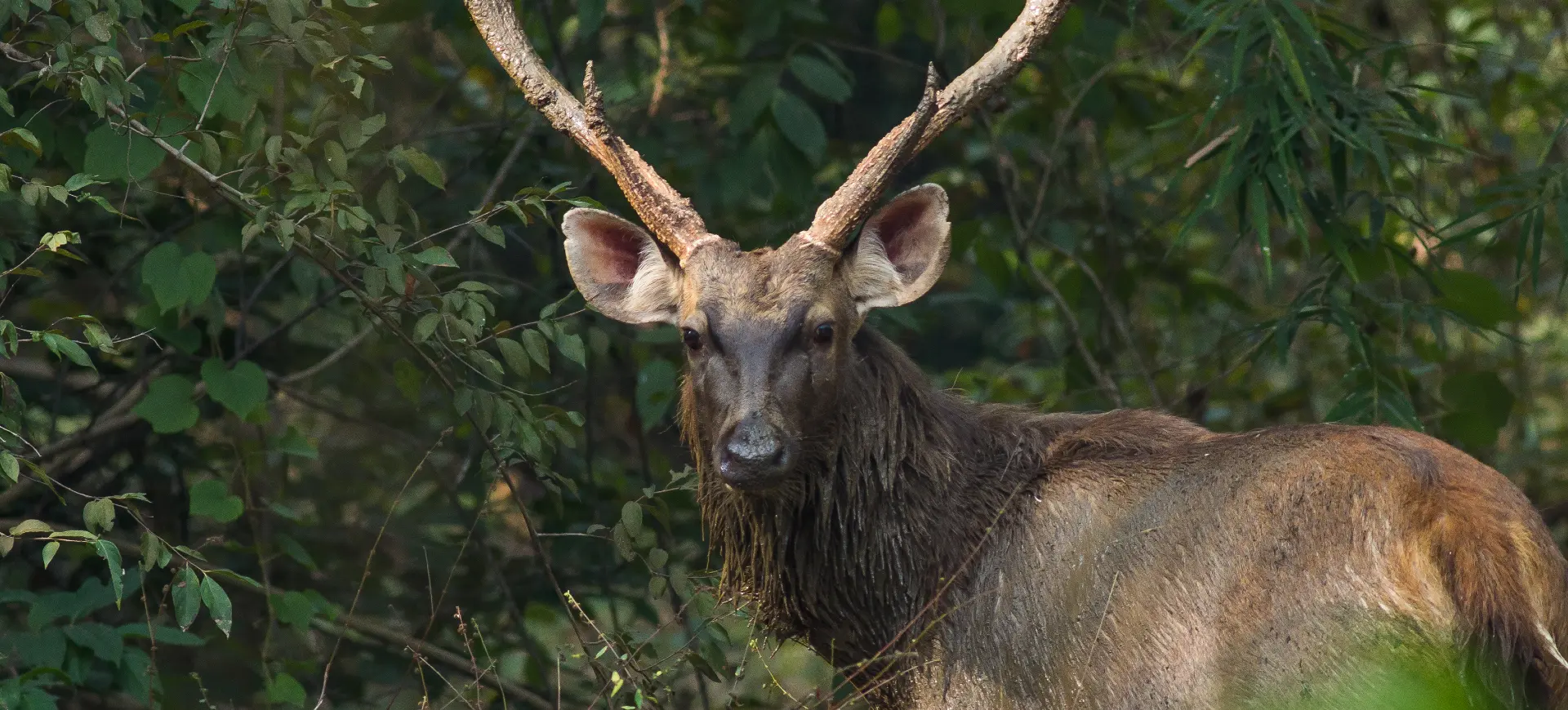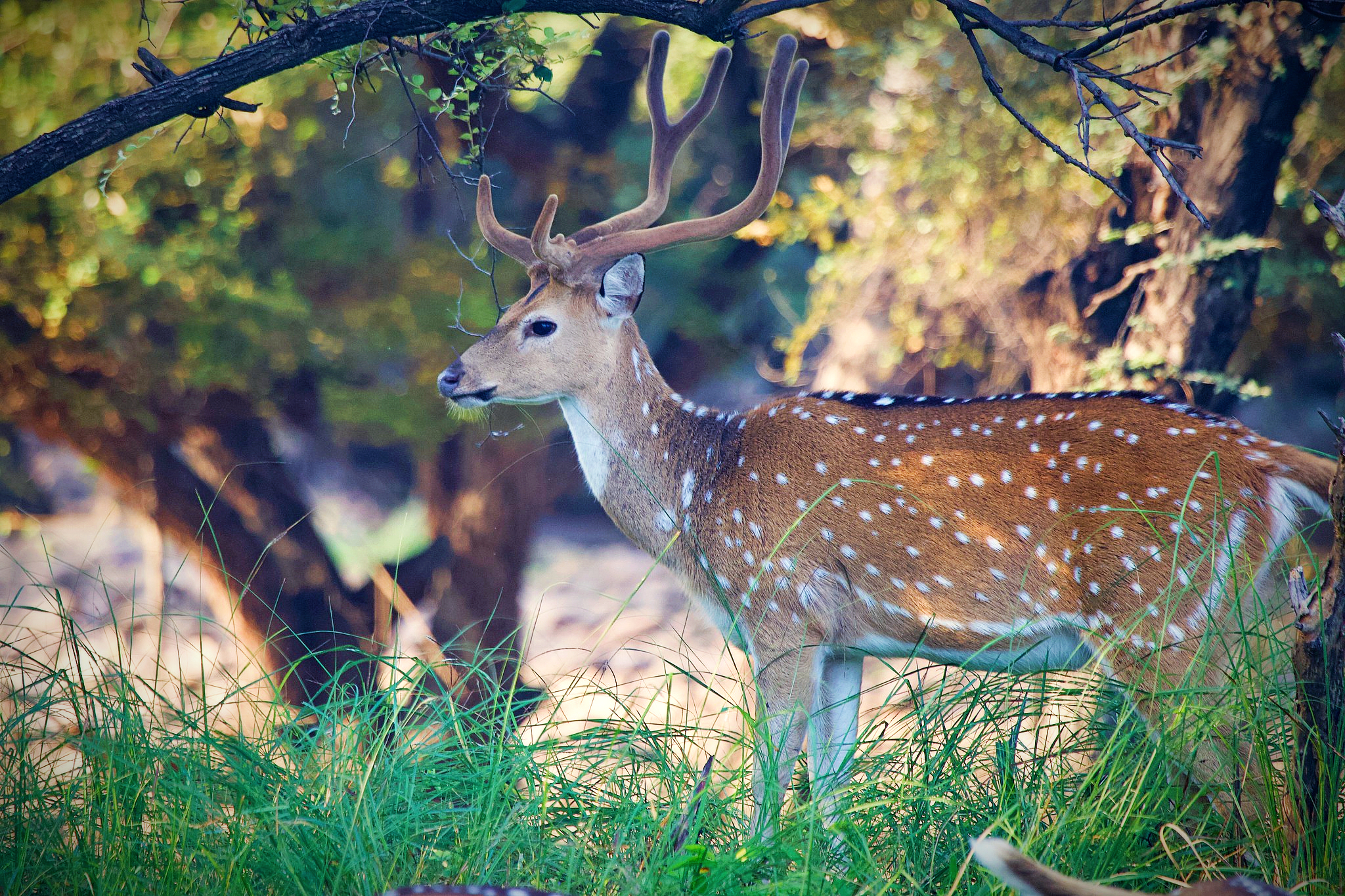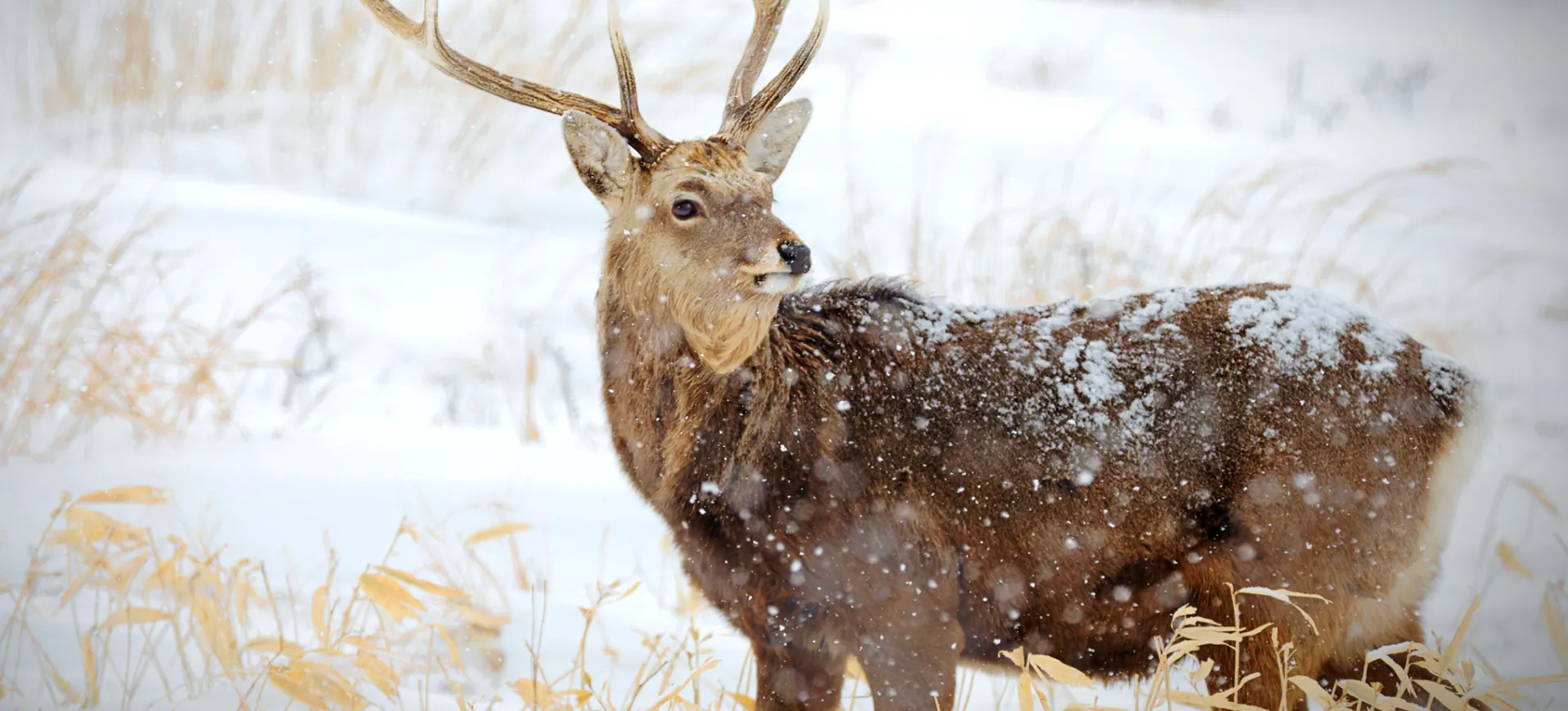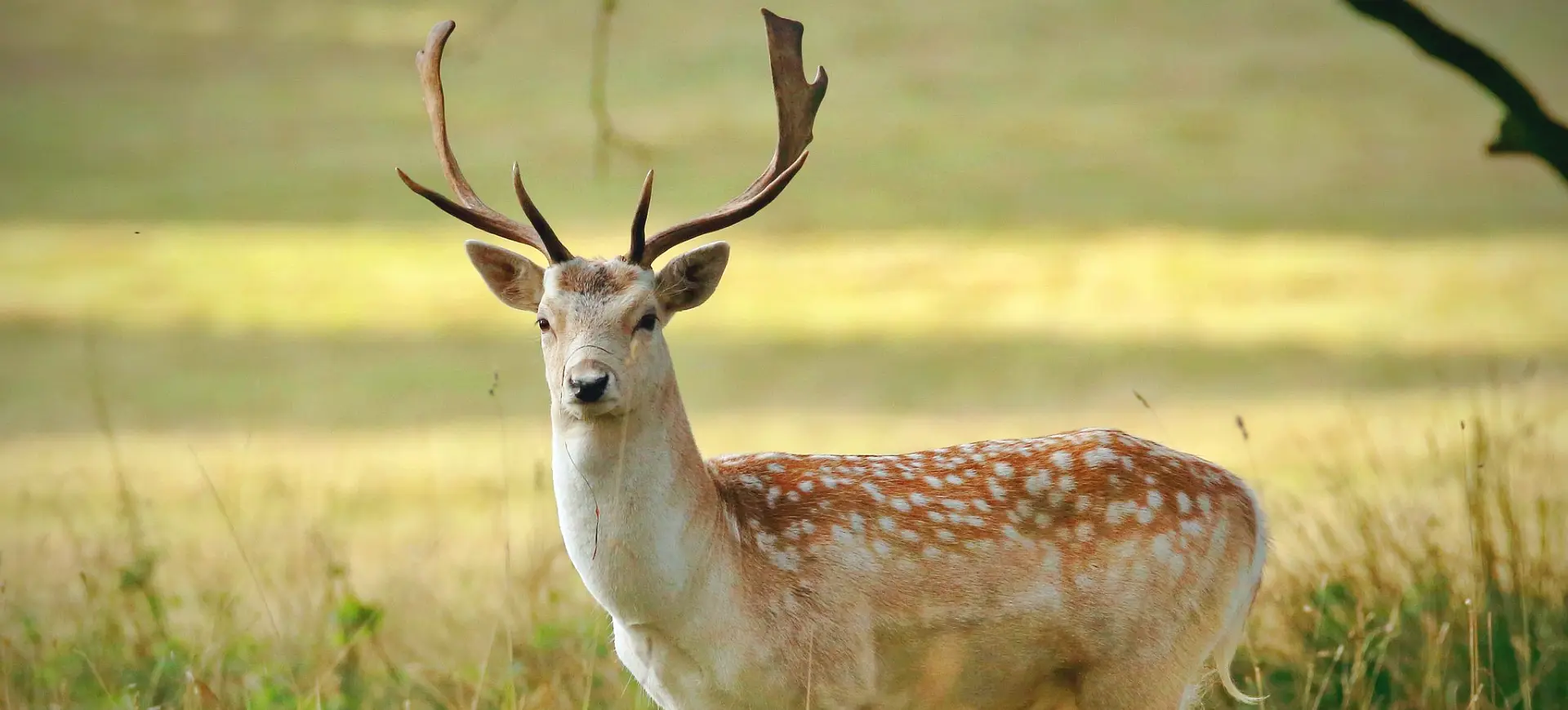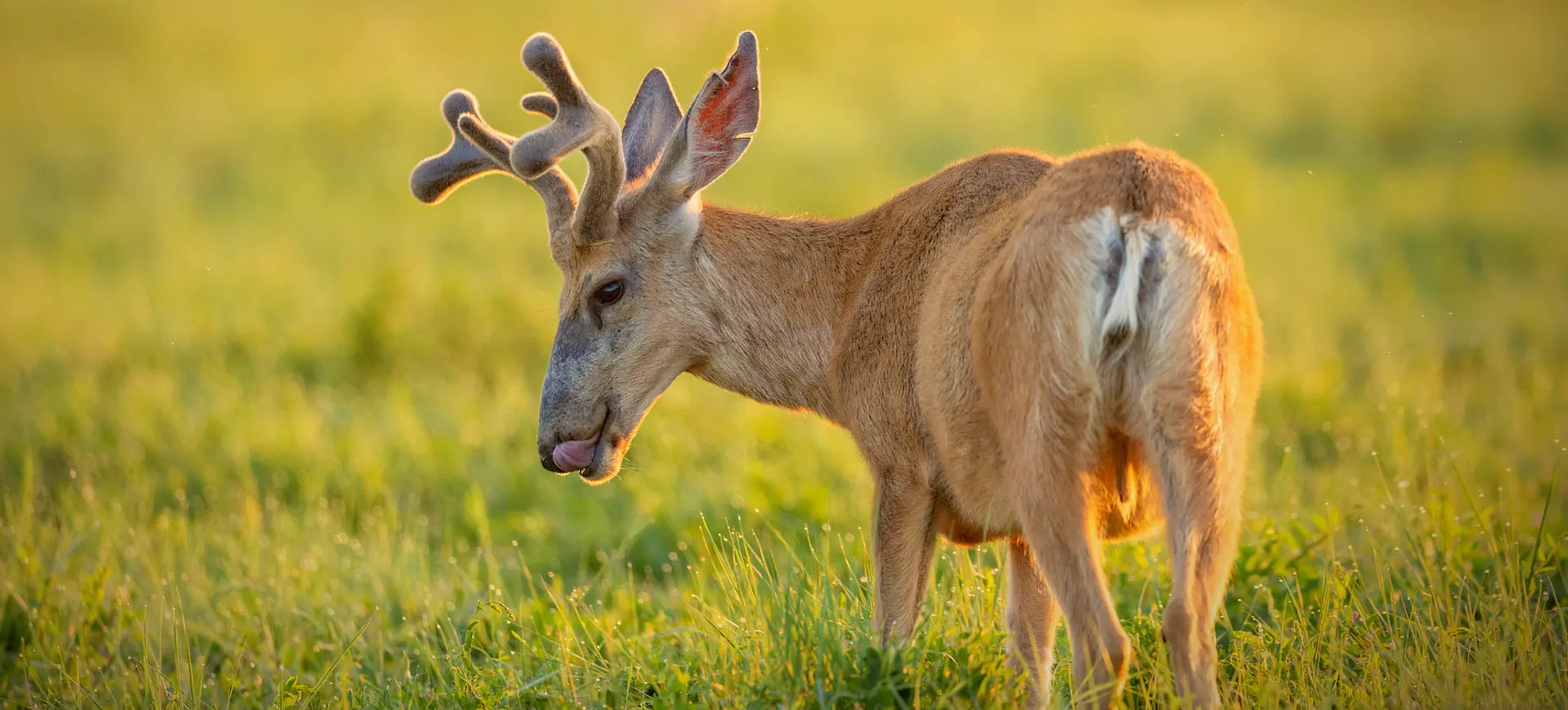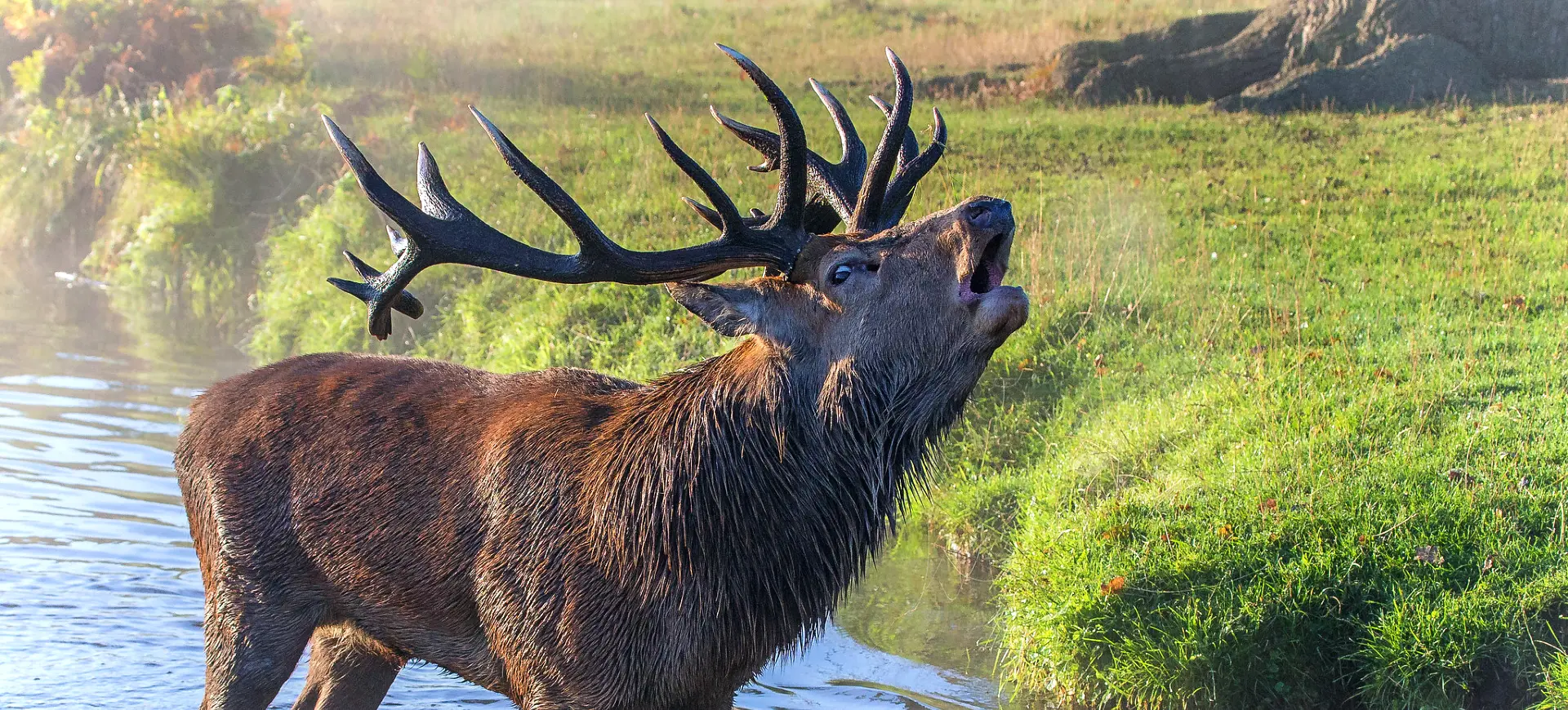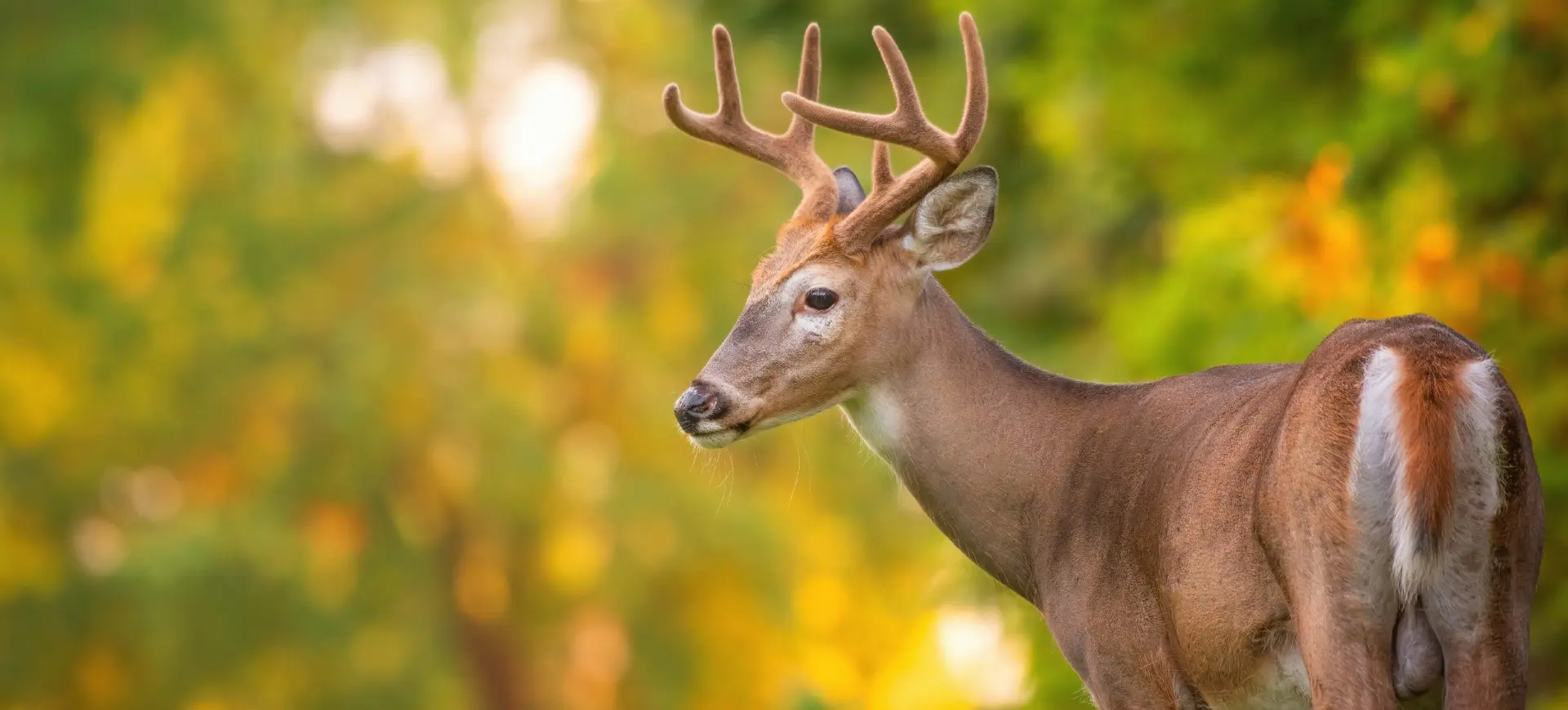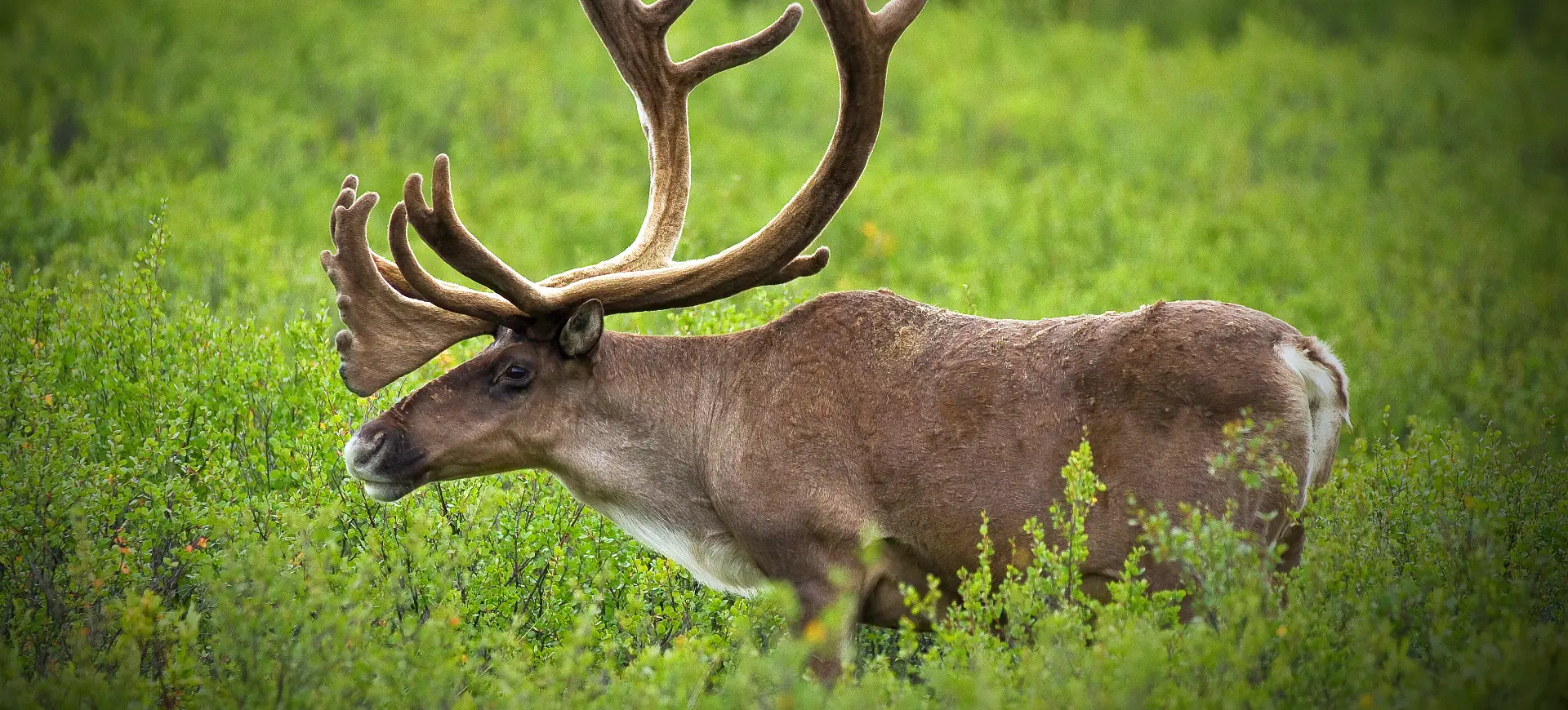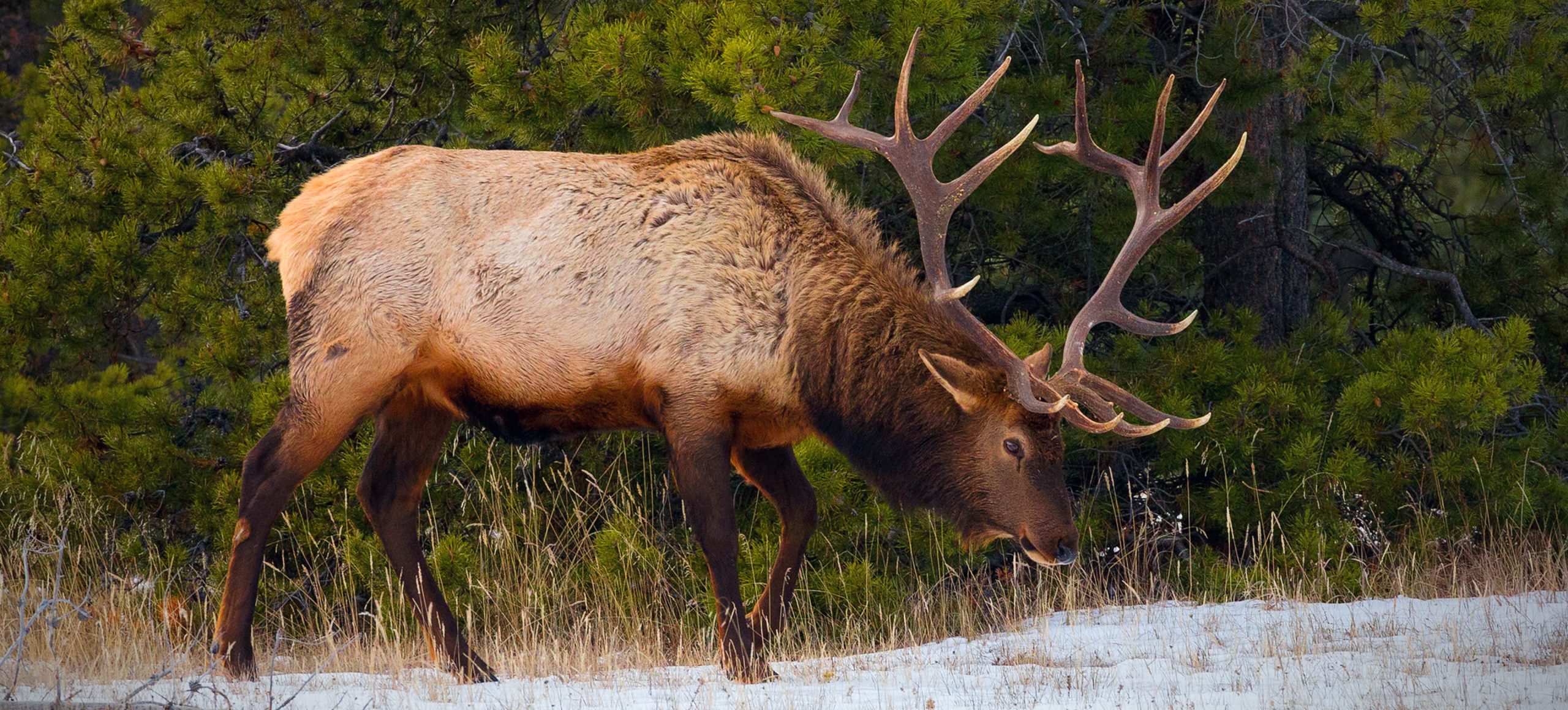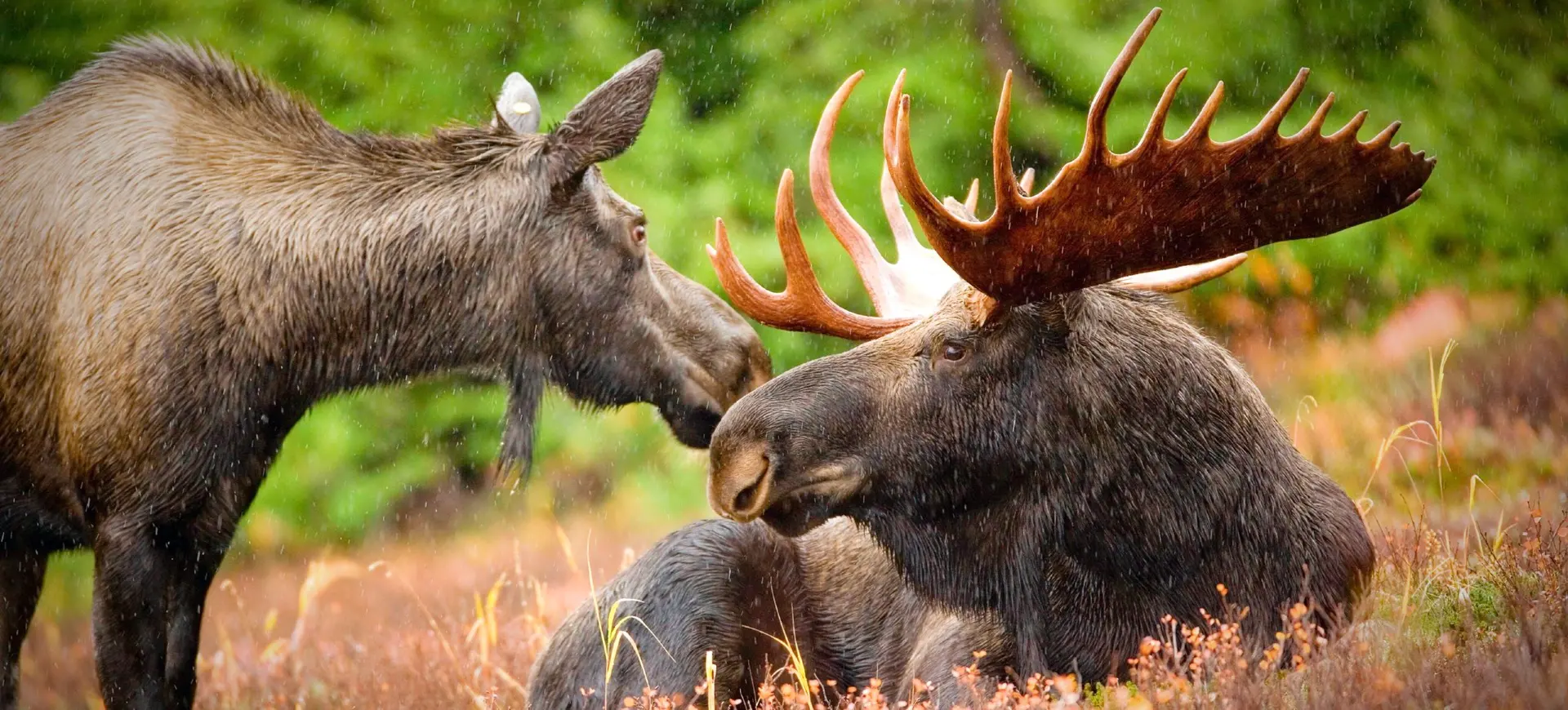Overview
The Gray Brocket (Mazama gouazoubira) is a small to medium-sized Neotropical deer recognized for its shy behavior and grayish-brown coat. It is widely distributed across central and eastern South America, inhabiting a range of habitats, including forests, savannas, and shrublands. Unlike larger deer species, Gray Brockets are solitary and elusive, typically avoiding open areas and human disturbance. Their adaptability has allowed them to persist in fragmented landscapes, but they remain vulnerable to hunting and habitat degradation.
Gray Brockets feed on a varied diet of leaves, fruits, flowers, and shoots, contributing to seed dispersal in their ecosystems. They are crepuscular, being most active at dawn and dusk when foraging and moving through dense cover. Their small size and cryptic coloration help them evade predators such as jaguars, pumas, and ocelots. Although generally quiet, they may emit sharp alarm calls when threatened.
These deer exhibit seasonal reproductive peaks in many areas, with most births occurring at the onset of the rainy season. Females typically give birth to a single spotted fawn, which remains hidden in dense vegetation for the first weeks of life. The species has a high reproductive potential, which facilitates recovery from localized population declines. Despite being classified as Least Concern, regional pressures can have a severe impact on numbers where hunting is intense.
Taxonomy
Kingdom
Phylum
Class
Order
Family
Genus
Species
Type
Current distribution:
Gray Brockets are distributed across Argentina, Bolivia, Brazil, Paraguay, Uruguay, and southern Peru. They are especially common in the Cerrado, Chaco, Pantanal, and Caatinga biomes. Their range extends from lowland forests to foothill regions, reaching an elevation of approximately 1,500 meters. Within this range, they are generally widespread but may be locally scarce where overhunting or habitat loss is severe.
Some populations remain stable in protected areas and private reserves that offer refuge from hunting. Regional declines have been observed in parts of Paraguay and southern Brazil, attributed to agricultural expansion and poaching. Connectivity between habitats remains critical for gene flow and recolonization of depleted sites. Long-term monitoring is needed to assess population trends across their diverse range.
Physical Description:
Gray Brockets have a compact, robust body covered in short, coarse hair that varies from grayish-brown to reddish-brown depending on age and season. The underparts are lighter, and the limbs are slender, ending in small, delicate hooves adapted for moving quietly through dense undergrowth. Males have short, unbranched antlers that are shed and regrown annually, usually measuring just a few inches in length. The head is small with large, dark eyes and prominent, mobile ears that detect subtle sounds.
The tail is short and inconspicuous, blending seamlessly with the rest of the pelage. Fawns are born with white spots that provide camouflage in dappled light, but these markings are lost as they mature. The nose and lips are dark, and the muzzle is typically lighter in color. Body size and coloration can vary geographically, with southern populations generally being slightly larger and grayer.

Lifespan: Wild: ~8 Years || Captivity: ~14 Years

Weight: Male: 37–55 lbs (17–25 kg) || Female: 33–49 lbs (15–22 kg)

Length: Male: 32–39 in (82–100 cm) || Female: 31–37 in (79–94 cm)

Height: Male: 23–26 in (58–66 cm) || Female: 22–25 in (56–64 cm)

Top Speed: 35 mph (56 km/h)
Characteristic:
Native Habitat:
Gray Brockets inhabit a broad range of environments, including dry forests, tropical moist forests, savannas, shrublands, and transitional zones. They prefer areas with dense understory vegetation that provides both food and cover from predators. These deer are often found in ecotones and edges where plant diversity and resource availability are high. They are also found in secondary growth and disturbed habitats, demonstrating considerable ecological flexibility.
In regions such as the Brazilian Cerrado, they utilize gallery forests and riparian zones as refuges during the dry season. In the Chaco and Pantanal, they exploit mosaic habitats that offer seasonal variation in forage and shelter. Although adaptable, they are sensitive to excessive habitat fragmentation, which limits their movement and increases hunting pressure. Their secretive habits help them persist in areas with moderate human disturbance.
Biomes:
Biogeographical Realms:
Continents:
Diet:
Diet & Feeding Habits:
Gray Brockets are primarily browsers, consuming a wide variety of plant materials including leaves, shoots, fruits, seeds, and flowers. Their diet changes seasonally, with a higher intake of fruits and tender shoots during the wet season when resources are abundant. They are important dispersers of seeds from native trees and shrubs, influencing forest regeneration dynamics. Feeding occurs mainly during early morning and late afternoon hours.
They have a ruminant digestive system with a four-chambered stomach that allows them to extract nutrients efficiently from fibrous vegetation. While foraging, they move slowly and deliberately, using their acute sense of smell to detect suitable food items. In areas with agricultural activity, they may feed opportunistically on crops, leading to conflict with farmers. Water sources are essential, and people typically drink water daily if it is available.
Mating Behavior:
Mating Description:
Gray Brockets have a polygynous mating system, with males defending territories and courting receptive females during the breeding season. Breeding peaks occur seasonally, often coinciding with the rainy season when resources are most plentiful to support gestation and lactation. Females give birth to a single fawn after a gestation period of approximately 200–220 days. Newborns are concealed in dense vegetation and visited periodically by the mother for nursing.
Males mark their territories with scent glands located on their legs and face. Courtship includes following, scent marking, and low vocalizations. Fawns remain hidden for several weeks before beginning to follow the mother more closely. Sexual maturity is typically reached around the age of one, allowing for relatively rapid population recovery.
Reproduction Season:
Birth Type:
Pregnancy Duration:
Female Name:
Male Name:
Baby Name:
Social Structure Description:
Gray Brocket Deer are solitary animals, with individuals maintaining exclusive home ranges, except during the breeding season. Home ranges are marked with scent glands and dung piles, which are used for communication. Females with fawns are especially secretive and avoid contact with conspecifics. Males may tolerate some overlap with female ranges but actively exclude rival males from their territories.
Encounters between adults are generally brief and marked by avoidance or threat displays. Social interactions are primarily limited to courtship and maternal care. Their solitary nature helps reduce competition for food in patchy environments. Vocalizations and scent marking remain key mechanisms of spacing and reproductive signaling.
Groups:
Conservation Status:
Population Trend:
Populations of the Gray Brocket are considered stable in many protected areas and less accessible regions. However, localized declines are evident in parts of their range where hunting pressure is intense or habitat conversion is widespread. Their ability to utilize secondary habitats supports persistence in moderately disturbed landscapes. Regional management plans have been implemented in areas with heavy hunting pressure to maintain sustainable numbers.
Monitoring programs in Argentina, Brazil, and Paraguay assess harvest levels and the integrity of habitats. In some regions, populations are rebounding due to improved enforcement and community conservation efforts. Conversely, in agricultural frontiers, fragmentation continues to restrict movement and increase vulnerability. Effective protection of habitat corridors is key to sustaining metapopulations.
Population Threats:
Major threats include habitat loss through agricultural expansion, particularly soybean cultivation and cattle ranching. Unregulated hunting for meat and sport remains a significant pressure in many rural areas. Road mortality is increasingly common in fragmented landscapes with expanding road networks. Disease transmission from domestic livestock may also pose emerging risks.
Climate change can exacerbate habitat degradation and reduce water availability, both of which are critical for survival. In some areas, competition with introduced species such as feral pigs may impact food resources. Human-wildlife conflict occurs where deer damage crops, leading to retaliatory killings. Conservation strategies must integrate habitat protection, law enforcement, and education to address these threats.
Conservation Efforts:
Gray Brockets are protected in several national parks and reserves throughout their range. Environmental legislation in Brazil, Argentina, and Paraguay regulates hunting and the trade of wildlife. Community-based conservation projects promote coexistence and sustainable use of resources. Research on population dynamics, genetic diversity, and habitat connectivity provides evidence-based support for effective management.
Some protected areas have implemented habitat restoration and anti-poaching patrols to reduce human impacts. Educational programs highlight the ecological role of brockets in seed dispersal and forest regeneration. Regional cooperation is necessary to maintain cross-border habitat corridors, which are essential for gene flow. Captive management plays a limited role, primarily for educational purposes and small-scale reintroduction efforts.
Additional Resources:
Fun Facts
- Gray Brockets can leap up to 6 feet in a single bound to escape predators.
- They have excellent hearing and sense of smell, compensating for relatively poor eyesight.
- Their antlers are simple spikes, rather than the branched structures found in many other deer.
- Fawns are born with spots that fade within a few months.
- They are sometimes called “Guazuncho,” derived from indigenous names.
- Their dung piles serve as territorial markers and communication points.
- Despite their name, some individuals have reddish coats depending on the region and season.
- They often freeze motionless to avoid detection when disturbed.
- Their diet includes over 50 species of plants.
- They can tolerate moderately disturbed habitats better than many other Neotropical deer.

